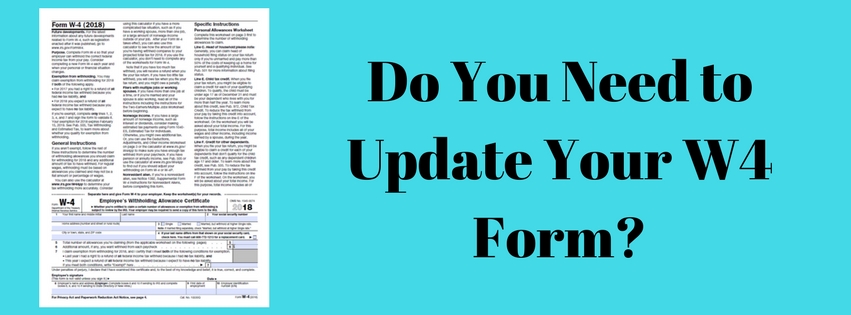On February 28, the IRS announced it has updated the withholding calculator and W4 form. Since tax reform legislation was signed into law this year, federal withholding amounts have changed. In order to make sure you have the correct amount of tax withheld, you may want to review the information and submit a new form to your employer.
The Tax Cuts and Jobs Act made changes to the tax law, including increasing the standard deduction, removing personal exemptions, increasing the child tax credit, limiting or discontinuing certain deductions and changing the tax rates and brackets.
If changes to withholding should be made, the Withholding Calculator gives you the information needed to fill out a new Form W-4, Employee ‘s Withholding Allowance Certificate. Submit the completed W-4 to your employer.
The IRS encourages you to use the Withholding Calculator to perform a quick “paycheck checkup.” Checking your withholding can help protect against having too little tax withheld and facing an unexpected bill or penalty at tax time in 2019. It can also prevent you from having too much withheld; with the average refund topping $2,800, you might prefer to have less tax withheld up front and receive more in their paychecks.
As a first step to reflect the tax law changes, the IRS released new withholding tables in January. These tables were designed to produce the correct amount of tax withholding — avoiding under- and over-withholding of tax — for those with simple tax situations. This means that people with simple situations might not need to make any changes. These situations include singles and married couples with only one job, who have no dependents, and who have not claimed itemized deductions, adjustments to income or tax credits.
People with more complicated financial situations might need to revise their W-4. With the new tax law changes, it’s especially important for these people to use the Withholding Calculator on IRS.gov to make sure they have the right amount of withholding.
Among the groups who should check their withholding are:
- Two-income families.
- People with two or more jobs at the same time or who only work for part of the year.
- People with children who claim credits such as the Child Tax Credit.
- People who itemized deductions in 2017.
- People with high incomes and more complex tax returns.
If you have a more complex situation because you owe self-employment tax, the alternative minimum tax, or tax on unearned income from dependents, or have capital gains and dividends, you might need to use Publication 505, Tax Withholding and Estimated Tax, expected to be available on IRS.gov in early spring, instead of the Withholding Calculator.
If you are unsure how this change affects your taxes, be sure to speak with your CPA.
